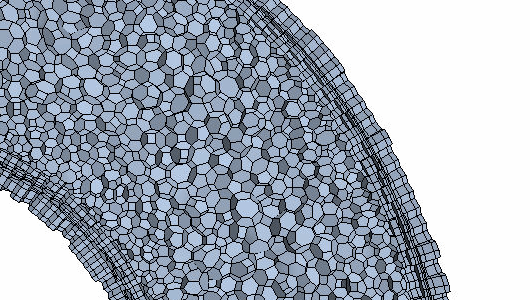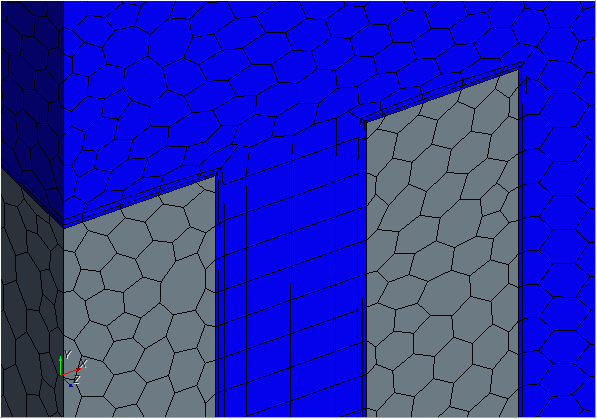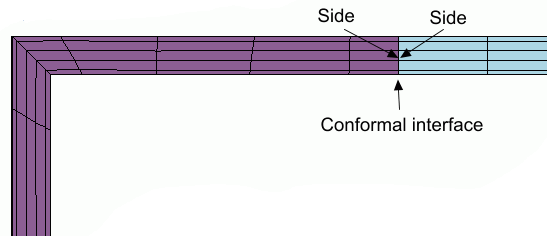What Is the Thin Mesher?
When activated, the thin meshing model allows thin areas in the geometry to have a prismatic type volume mesh. Using this mesh improves the overall cell quality and reduces the cell count when compared with an equivalent tetrahedral or polyhedral type core mesh.
Using this type of mesh can aid the convergence of simulations involving conjugate heat transfer in thin geometries. In Parts-Based Meshing, the Thin Mesher is available to select as an Optional Volume Mesher after either the Polyhedral or Tetrahedral volume mesher is selected. You can specify the number of layers in the thin mesh and the threshold size for thin/non-thin structures.
In Parts-Based Meshing, the core volume mesher that you select determines if a triangular or polygonal type thin mesh is generated.

The thin mesher requires a good quality input surface mesh of triangular type. The thin mesher is not compatible with quad-dominant surface meshes. The thin mesher is compatible with enhanced-quality triangular surface meshes, see Surface Remesher Reference. However, this combination is not particularly useful as the thin mesh can decrease the enhanced-quality of the input mesh during the prism generation process. If the input mesh does not satisfy these prerequisites, the thin mesher can either fail or generate a poor quality mesh.
Where the geometry transitions from thin features to coarser features, the prismatic mesh in the thin portions transitions naturally to the specified core-type mesh in the non-thin portions.
Simcenter STAR-CCM+ considers a number of different factors when defining the threshold for transition. For example, it checks if the distance between two opposing surfaces (the base surface and the target surface) is four times the average edge length of the base surface.
If the mesh setting values are close to the internal tolerance values, the resulting mesh can be a combination of thin and non-thin portions, even if the cell thickness you define is below the automatic threshold value.
The properties of the thin mesh can be changed to provide more meshing controls during the mesh process. The input values can be set on two different levels, that are listed below in lowest to highest priority:
- Global Level
- Region / Parts Level
When using Parts-Based Meshing, you can create Part Controls in which you can specify customized Values for the Thin Mesher for different geometry parts.

Prism meshes cannot grow at thin-thin interfaces because conformality cannot be maintained in such cases. This condition is enforced no matter what other parameter is used.

However, the mesher still collapses prism layers when:
- The number of prism layers on each side are different.
- There are more than two sides that meet at one interface.